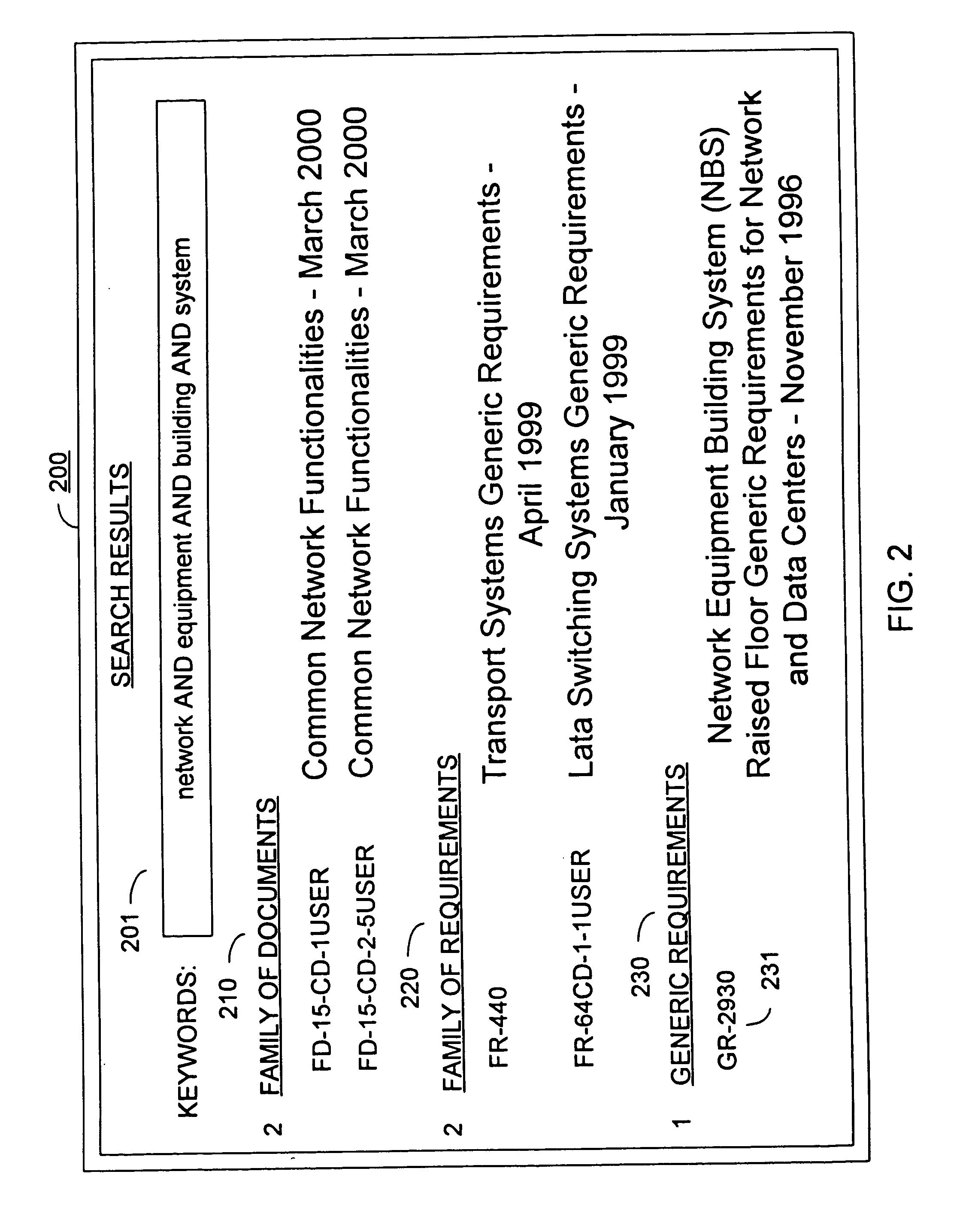Automatic recommendation of products using latent semantic indexing of content
a technology of latent semantic indexing and automatic recommendation, applied in the field of product selection procedure, can solve the problems of laborious and inability to automatically recommend products, less likely to produce a correctly tailored list for all items, and the expert will be quickly overwhelmed in any attempt to provide a comprehensive set of recommendations
- Summary
- Abstract
- Description
- Claims
- Application Information
AI Technical Summary
Problems solved by technology
Method used
Image
Examples
Embodiment Construction
[0051] Before discussing the principles and operational characteristics of this invention in detail, it is helpful to present a motivating example of a Latent Semantic Indexing algorithm (with reference to U.S. Pat. No. 4,839,853).
[0052] The contents of Table 1 are used to illustrate how semantic structure analysis works and to point out the differences between this method and conventional keyword matching.
1 TABLE 1 c1: Human machine interface for Lab ABC computer applications c2: A survey of user opining of computer response time c3: The EPS user interface management system c4: Systems and human systems engineering testing of EPS-2 c5: Relation of user-perceived response time to error measurement m1: The generation of random, binary, unordered trees m2: The intersection graph of paths in trees m3: Graph minors TV: widths of tress and well-quasi-ordering m4: Graph minors: a survey
[0053] In this example, a file of text objects is composed of nine technical documents with titles c1-c5...
PUM
 Login to View More
Login to View More Abstract
Description
Claims
Application Information
 Login to View More
Login to View More - R&D
- Intellectual Property
- Life Sciences
- Materials
- Tech Scout
- Unparalleled Data Quality
- Higher Quality Content
- 60% Fewer Hallucinations
Browse by: Latest US Patents, China's latest patents, Technical Efficacy Thesaurus, Application Domain, Technology Topic, Popular Technical Reports.
© 2025 PatSnap. All rights reserved.Legal|Privacy policy|Modern Slavery Act Transparency Statement|Sitemap|About US| Contact US: help@patsnap.com



